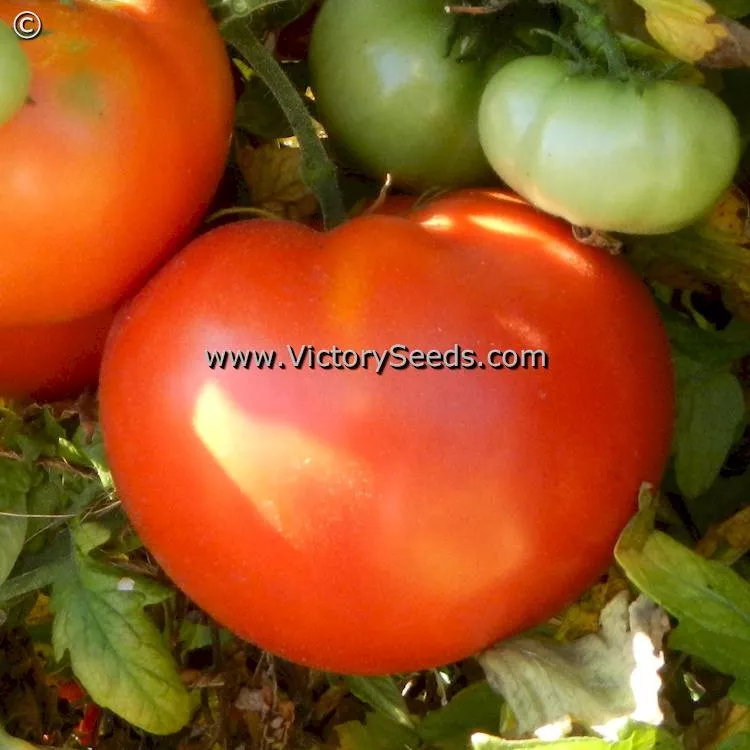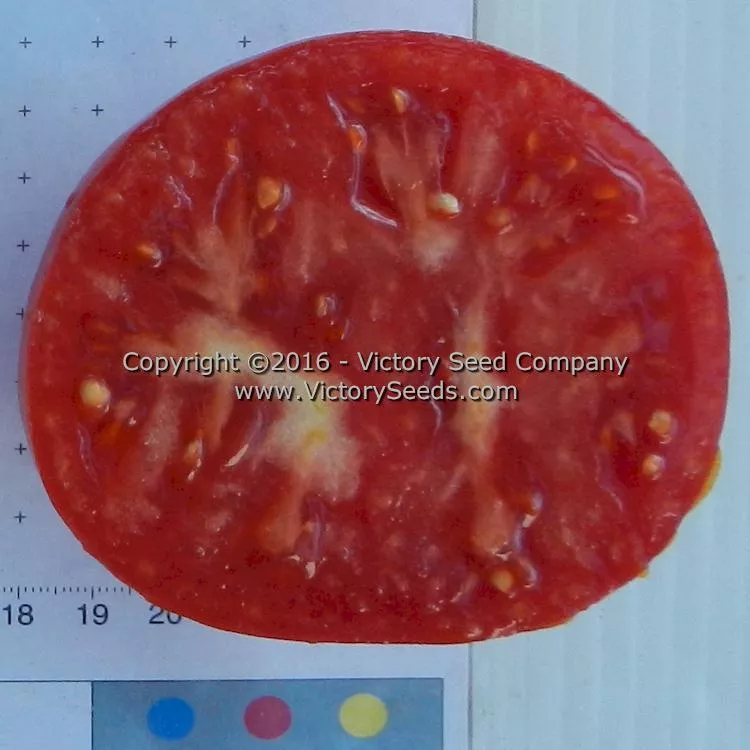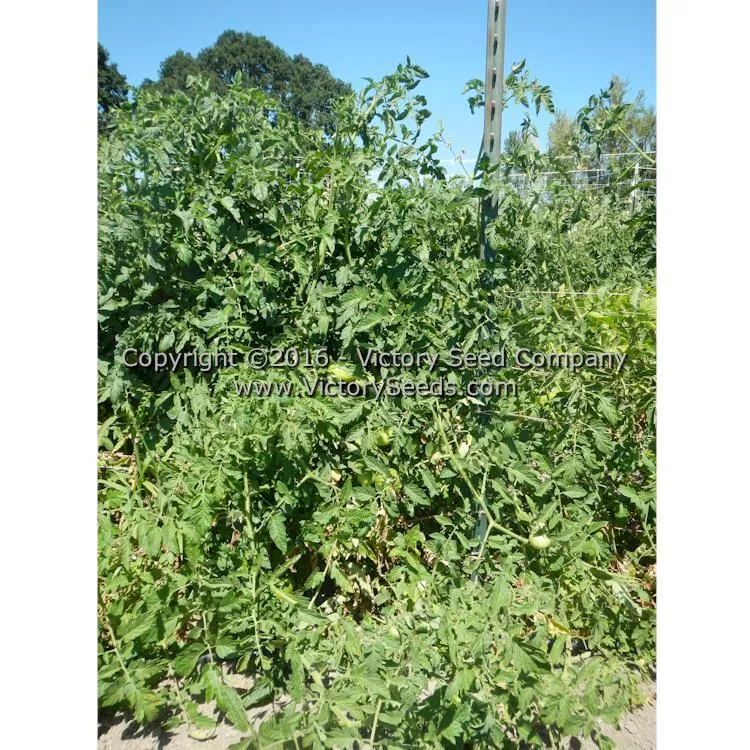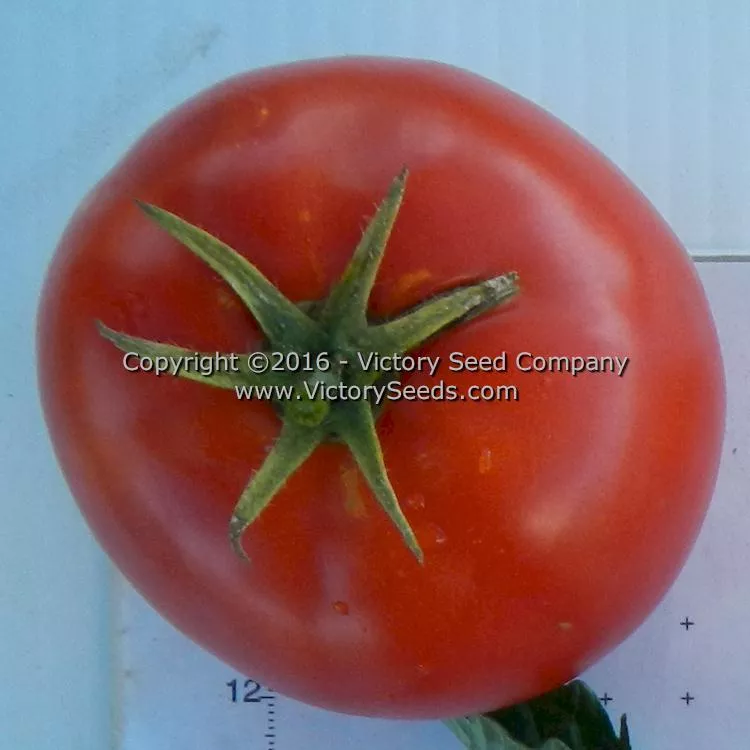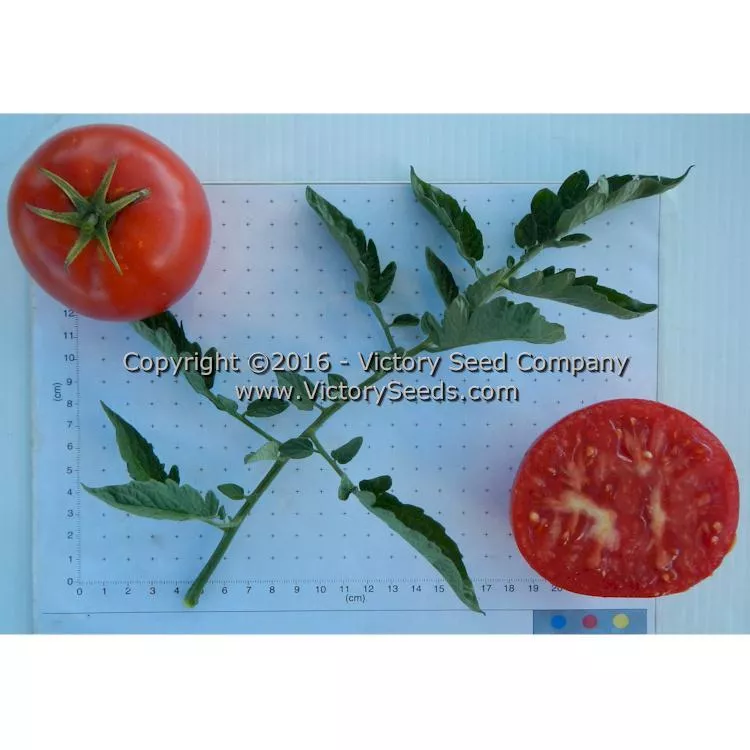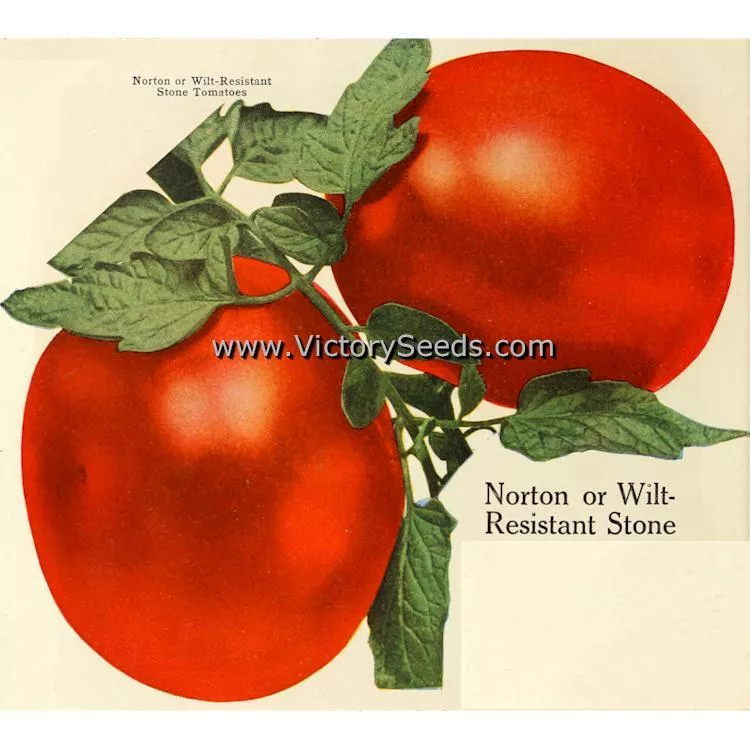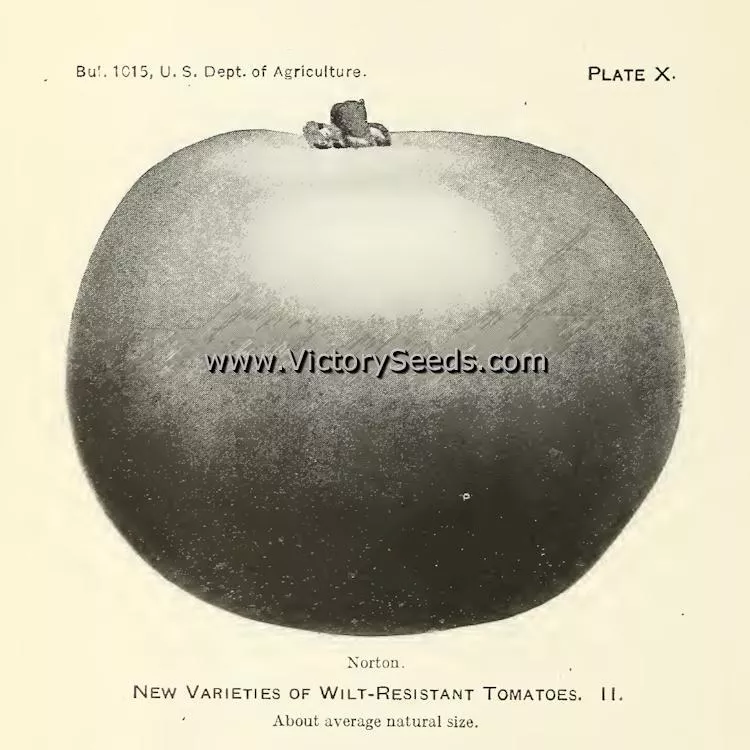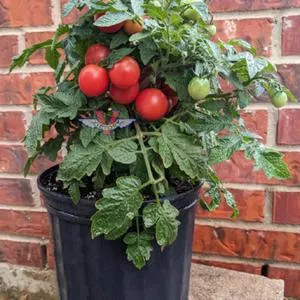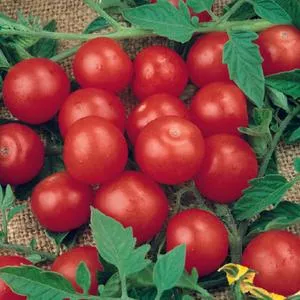






Norton (Norton WR) Tomato
Solanum lycopersicum
Price: $3.45
SKU: 3403761VERY IMPORTANT NOTE: This variety will be available again in early January, 2026. Please signup below to be notified when it becomes available. Click here to learn more about our seasonal products.
100 days, indeterminate - Also known as 'Norton WR' and 'Wilt-Resistant Stone', the 'Norton' tomato has regular leaf vines and is very hardy and productive. Its fruit are bright red in color, oblate in shape and range from four to twelve ounces each. The skin is thin yet crack resistant with flesh that is meaty and juicy (thick pulp), with a pleasantly tart flavor. It is a late variety that is highly resistant to tomato wilt (Fusarium lycopersici) and somewhat resistant to leaf-spot (Septoria lycopersici).[6]
In 1912, John B. S. Norton of the Maryland Agricultural Experiment Station, began selecting tomato plants for disease resistance. In the spring of 1915, he sent Fred J. Pritchard of the USDA samples of unnamed seeds from selections that he had made from plants originating in a highly infected field of 'Stone'.[6] Pritchard started his own disease-resistance work that year. After further selection work, he released the 'Norton' tomato in 1917. It became one of the leading disease resistant tomato varieties, especially in the Eastern tomato growing regions, for some years.[1]
As one of the first disease resistant releases, 'Norton' was of commercial significance to the large tomato producers. It also quickly found its way into the catalogs of many home garden seed suppliers. In Livingston's 1923 seed annual, they stated, "This variety is commanding quite a little attention on account of its wilt-resisting qualities. It is similar in habit of growth, color, and season to our Livingston's Stone. The Norton should be a valuable sort for the South where the wilt is prevalent." Our parent stock source was USDA ARS accession number PI 644795.
In 1912, John B. S. Norton of the Maryland Agricultural Experiment Station, began selecting tomato plants for disease resistance. In the spring of 1915, he sent Fred J. Pritchard of the USDA samples of unnamed seeds from selections that he had made from plants originating in a highly infected field of 'Stone'.[6] Pritchard started his own disease-resistance work that year. After further selection work, he released the 'Norton' tomato in 1917. It became one of the leading disease resistant tomato varieties, especially in the Eastern tomato growing regions, for some years.[1]
As one of the first disease resistant releases, 'Norton' was of commercial significance to the large tomato producers. It also quickly found its way into the catalogs of many home garden seed suppliers. In Livingston's 1923 seed annual, they stated, "This variety is commanding quite a little attention on account of its wilt-resisting qualities. It is similar in habit of growth, color, and season to our Livingston's Stone. The Norton should be a valuable sort for the South where the wilt is prevalent." Our parent stock source was USDA ARS accession number PI 644795.
Fruit Color: Red
Harvest Timing: Late Season
Genetic Classification: Open Pollinated
Harvest Timing: Late Season
Genetic Classification: Open Pollinated
Sow seeds indoors (do not direct sow into the garden), using sterile seed starting mix, 6 to 8 weeks before your last expected frost date. Plant 1/4" deep, water lightly but keep moist until emergence.
Full light and cooler temps (60° to 70°) will help to prevent the seedlings from becoming too leggy. If plants become rootbound before you can safely set them into the ground, transplant them into larger pots.
Harden off plants before planting outside. Young plants are very susceptible to frost and sunburn damage. Avoid too much nitrogen. Water evenly but not in excess.
Click here to view our full tomato growing guide.
Full light and cooler temps (60° to 70°) will help to prevent the seedlings from becoming too leggy. If plants become rootbound before you can safely set them into the ground, transplant them into larger pots.
Harden off plants before planting outside. Young plants are very susceptible to frost and sunburn damage. Avoid too much nitrogen. Water evenly but not in excess.
Click here to view our full tomato growing guide.
References:
- "Yearbook of Agriculture," USDA, 1937.
- "Tomato Wilt Investigations," Kansas State AES, Technical Bulletin 20, February, 1926.
- "Tomato Wilt Disease," by R. P. White, Kansas State AES, Circular 140, June, 1928.
- "Growing Tomatoes in Kansas," by Walter B. Balch, Kansas State AES, Circular 172, November, 1933.
- "The Pedigree of Varieties of Lycopersicon Esculentum Mill.," G. A. Kemp, Canada Department of Agriculture, Lethbridge, Alberta, April 20, 1960.
- "Development of Wilt-Resistant Tomatoes," by Fred J. Pritchard, USDA, Bulletin No. 1015, March 28, 1922.
Customer Reviews:
Do you have experience with this one? 📝 📣 Write a review!
No reviews have been posted yet.

